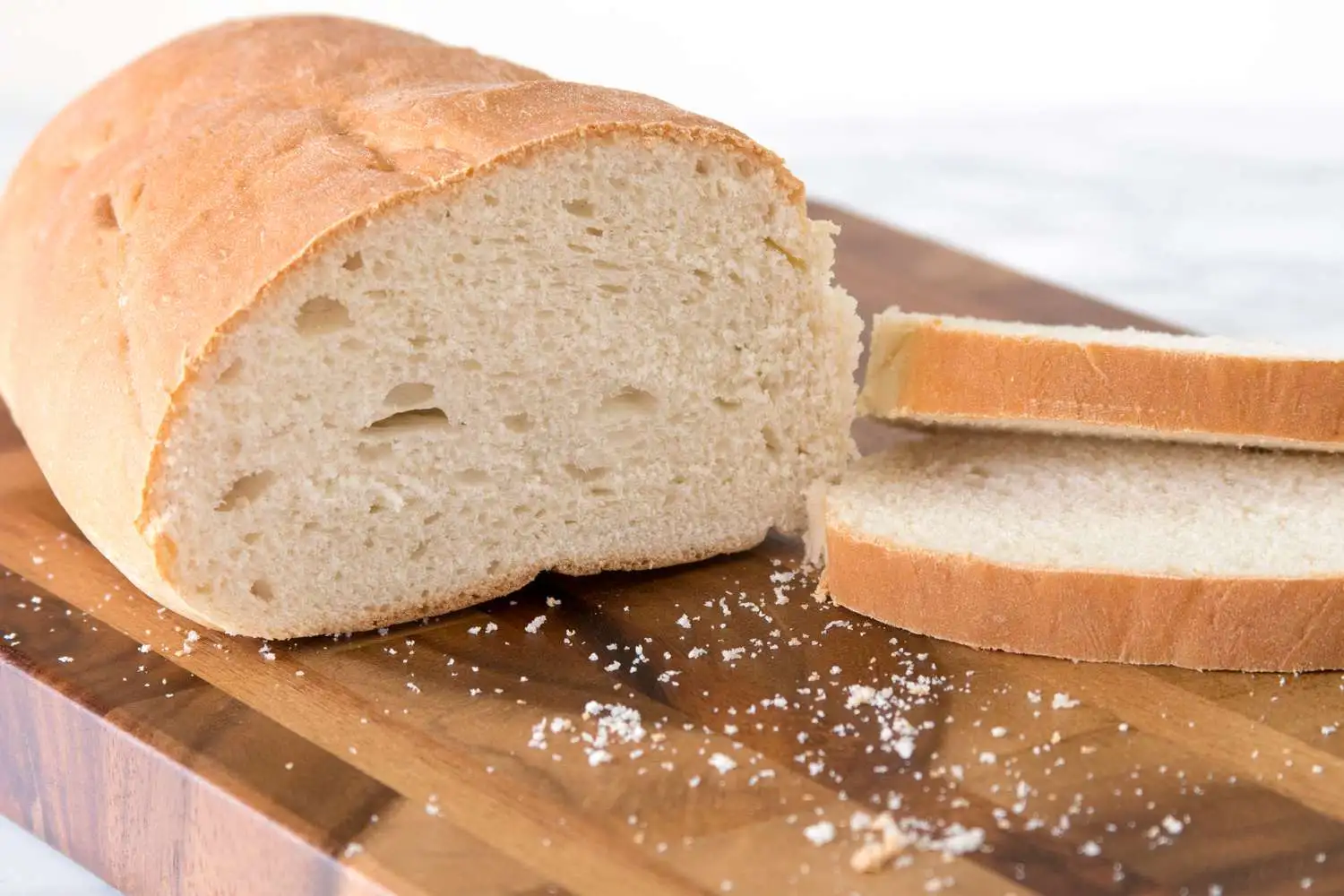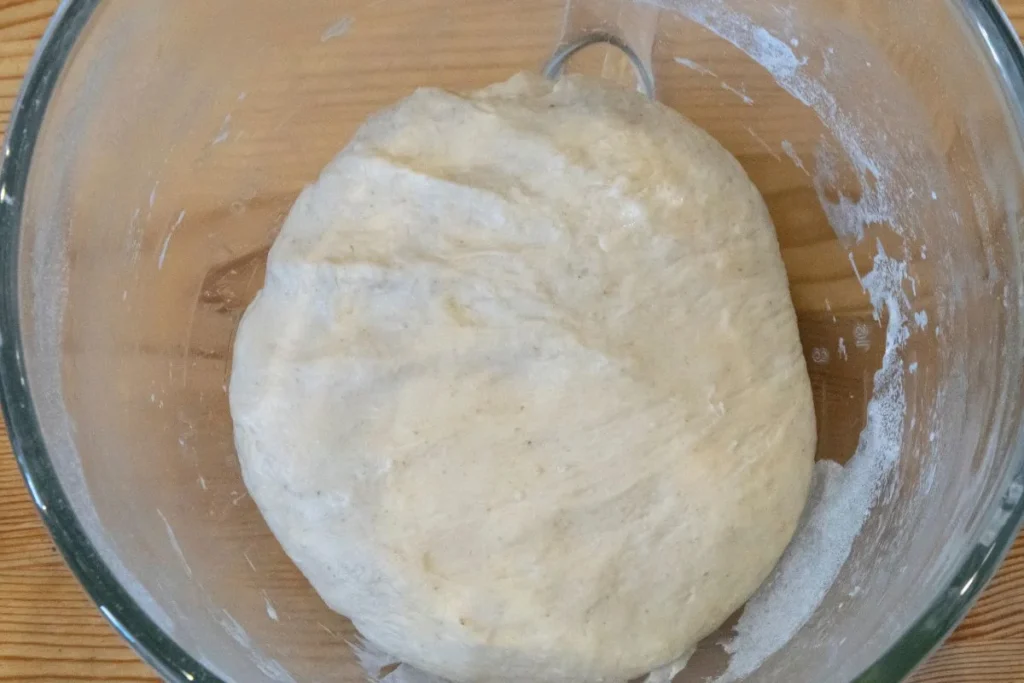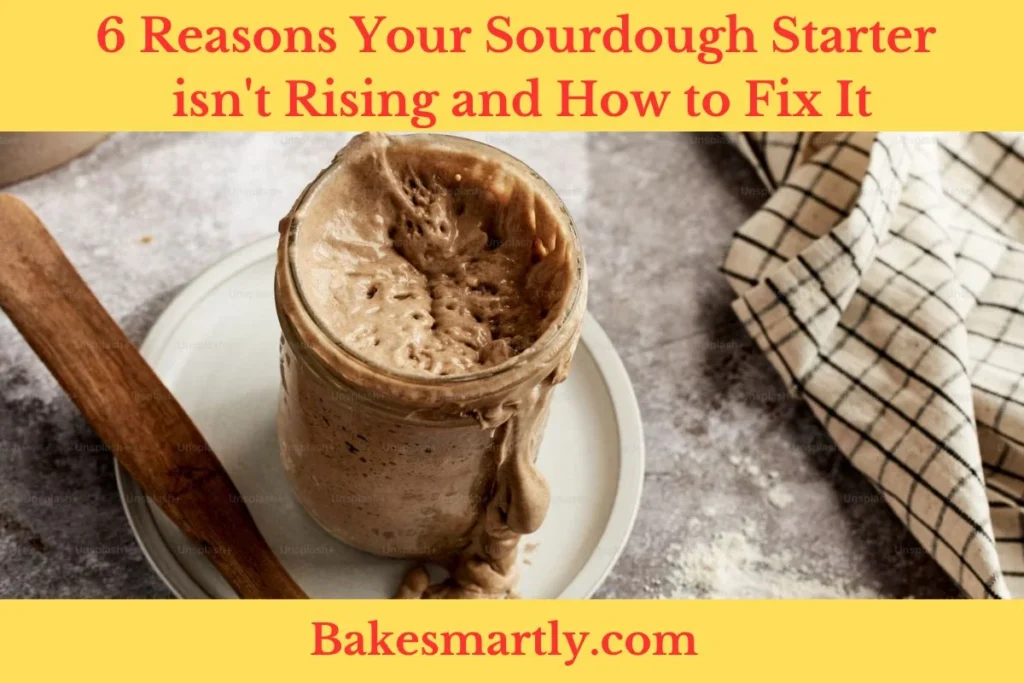
Why Is My Sourdough Bread Crumbly? Discover 5 Tips to Avoid Crumbly Disasters!
Sourdough bread is a beloved and traditional type of bread known for its tangy flavor, chewy texture, and impressive nutritional profile. However, despite its popularity, sometimes you may encounter a frustrating issue with your sourdough bread: crumbliness.
If you’ve ever wondered why your sourdough bread turns out crumbly instead of soft and moist, this article is here to help. We will explore the common causes behind crumbly sourdough bread and provide you with five valuable tips to avoid crumbly disasters in the future.
Table of Contents
ToggleCommon Causes of Crumbly Sourdough Bread
Discover the reasons behind crumbly sourdough bread as we explore the common culprits affecting its texture and quality
Lack of Gluten Development
Gluten, a protein found in wheat flour, plays a vital role in providing structure and elasticity to bread dough. When gluten development is insufficient, the resulting texture can be crumbly. Inadequate kneading or using flours with low gluten content can impede the formation of gluten strands, ultimately leading to a weak dough structure.
Proper kneading techniques and selecting flours with higher gluten content, such as bread flour or high-gluten flour, are essential for ensuring strong gluten development. This enables the dough to stretch and hold gas produced by yeast, resulting in a desirable texture characterized by a soft, springy crumb.
Insufficient Moisture
Sufficient moisture is essential in achieving a moist and tender crumb in sourdough bread. When the dough lacks adequate moisture, it can result in a dry and crumbly texture.
Accurate measurement of hydration and using flours that are not overly dry are crucial factors in preventing this problem. Inaccurate hydration measurements, either adding too little water or using insufficiently moist ingredients, can lead to dryness in the dough.
Similarly, using overly dry flours that lack the necessary moisture content can also contribute to a crumbly texture. Ensuring proper hydration levels and using flour with appropriate moisture content are key steps in creating a delectable sourdough bread with a soft and moist crumb.

Over-Fermentation
Excessive fermentation time can have detrimental effects on the texture of sourdough bread, leading to a crumbly consistency. When dough is allowed to ferment for too long, it undergoes over-fermentation, causing an excessive breakdown of the gluten structure. As a result, the bread ends up with a weak crumb and a collapsed appearance.
The prolonged fermentation process leads to the depletion of the dough’s structural integrity, making it unable to retain its shape and form. It is crucial to follow specific fermentation guidelines provided in sourdough bread recipes to prevent over-fermentation and ensure a moist and well-structured crumb in the final product.
Inadequate Kneading
Proper kneading of the dough plays a crucial role in gluten development and the even distribution of yeast and bacteria.
Insufficient kneading can result in an uneven dispersion of these essential components, leading to inconsistent fermentation and ultimately resulting in crumbly bread. Adequate kneading helps create a strong and cohesive gluten network, allowing the dough to rise properly during fermentation.
It ensures that the yeast and bacteria are evenly distributed, promoting consistent fermentation throughout the dough. By ensuring thorough and proper kneading techniques, you encourage optimal fermentation and gluten development, resulting in a well-structured, moist, and delightful final product.
Incorrect Baking Temperature
The baking temperature of sourdough bread is another critical factor that can contribute to crumbliness. If the oven temperature is too high, the crust may form too quickly, trapping steam inside and impeding the proper expansion of the loaf. This can result in a dense and crumbly texture.
On the contrary, if the temperature is too low, the bread may remain undercooked, leading to a collapsed and overly moist crumb. It is crucial to bake sourdough bread at the recommended temperature to achieve optimal results.
Monitoring the baking process closely and adjusting the temperature as necessary will help you achieve a perfectly baked loaf with a moist and well-structured crumb.

Five Tips to Avoid Crumbly Sourdough Bread
Discover how to make your sourdough bread less crumbly with these five simple tips.
Tip 1: Optimize Gluten Development
To optimize gluten development, it is beneficial to incorporate high-gluten flour or bread flour that contains a higher protein content. These flours provide the necessary building blocks for strong gluten formation.
Additionally, it is crucial to ensure sufficient kneading and employ proper folding techniques during the fermentation process. Kneading helps align the gluten strands and develop a robust structure, while folding contributes to the uniform distribution of yeast and bacteria.
Both techniques work synergistically to create a network of gluten that gives the sourdough bread its desired elasticity and chewiness. By prioritizing these practices, you can maximize gluten development and achieve a delightful texture in your homemade loaves.
Tip 2: Adjust Dough Hydration
Maintaining the appropriate level of hydration is vital to attain the desired texture in sourdough bread. It is essential to experiment and make adjustments to the water-to-flour ratio to achieve a dough consistency that is slightly sticky yet manageable.
It is important to consider that hydration requirements can vary depending on factors such as the type of flour being used and the ambient humidity in the environment.
By finding the right balance of hydration, you ensure that the dough has enough moisture to develop a moist and tender crumb, while still maintaining the necessary structure for a well-risen loaf.
Don’t be afraid to tweak the hydration until you achieve the perfect dough consistency for your sourdough bread recipe.
Tip 3: Monitor Fermentation Time
It is crucial to closely monitor the fermentation time to avoid over-fermentation in your sourdough bread. Following a recipe that provides specific fermentation guidelines is highly recommended. Various factors, such as temperature, ambient conditions, and the vitality of your sourdough starter, can significantly impact the duration of fermentation.
Higher temperatures accelerate fermentation, while cooler temperatures slow it down. Additionally, the strength and activity of your sourdough starter also play a role in determining the optimal fermentation time.
By carefully observing and adhering to the recommended fermentation guidelines, you ensure that the dough undergoes proper fermentation, resulting in a flavorful and well-balanced sourdough loaf.
Adjustments can be made based on the specific characteristics of your environment and starter to achieve the desired outcome.
Tip 4: Knead the Dough Properly
It is crucial to ensure thorough kneading of the dough to develop gluten and evenly distribute the yeast and bacteria throughout. Follow the recommended kneading time specified in your recipe, as it allows for the proper formation of gluten strands and activates the fermentation process.
If you feel uncertain about your kneading technique or want to refine your skills, watching instructional videos or joining baking communities can provide valuable guidance. These resources offer visual demonstrations and expert advice on kneading techniques, helping you achieve the desired texture and structure in your sourdough bread.
Remember, consistent and adequate kneading is essential for creating a well-developed gluten network, resulting in a delightful, chewy crumb in your finished loaf.
Tip 5: Maintain Accurate Baking Temperature
To achieve optimal results, it is important to preheat your oven properly and verify the accuracy of the temperature using an oven thermometer.
This ensures that the baking environment is consistent and reliable. When baking sourdough bread, follow the recommended temperature specified in your recipe and closely monitor the progress to avoid undercooking or overcooking.
Maintaining the correct baking temperature is crucial for proper dough expansion and crust formation. If needed, be ready to make adjustments to the temperature or baking time to achieve the desired outcome.
By being vigilant and attentive throughout the baking process, you can ensure that your sourdough bread is baked to perfection, with a beautifully golden crust and a soft, fully cooked interior.

Troubleshooting | Common Mistakes and Solutions
- Issue: My bread is consistently crumbly.
- Solution: Check your hydration level and adjust it accordingly. Ensure proper kneading and fermentation times.
- Issue: The crust is too hard, and the crumb is crumbly.
- Solution: Try incorporating fats or oils into your dough. Adjust your baking temperature and time.
- Issue: The crumb is dense and crumbly.
- Solution: Make sure your dough is adequately kneaded and properly fermented. Adjust the hydration level if needed.
- Issue: The bread becomes crumbly after a few hours.
- Solution: Ensure proper cooling and storage techniques. Avoid storing bread in airtight containers.
- Issue: The crumb is unevenly textured.
- Solution: Pay attention to ingredient ratios and follow the recipe precisely. Avoid overmixing the dough.
Frequently Asked Questions | Why Is My Sourdough Bread Crumbly?
How can I fix crumbly sourdough bread?
To fix crumbly sourdough bread, you can adjust the hydration level, knead the dough thoroughly, and ensure proper fermentation and baking techniques.
What causes sourdough bread to be crumbly?
Crumbly sourdough bread can be caused by low hydration, insufficient kneading, inadequate fermentation, imbalanced ingredient ratios, or overproofing.
Can I add fats or oils to my sourdough bread dough?
Yes, adding fats or oils like olive oil, butter, or vegetable oil can improve the moisture and tenderness of the bread, reducing crumbliness.
How should I store sourdough bread to prevent it from becoming crumbly?
Store sourdough bread in a paper bag or bread box to maintain its texture. Avoid using plastic bags, as they can make the crust soft and promote crumbliness.
Can slicing techniques affect the crumb texture of sourdough bread?
Yes, using a serrated bread knife or a sharp chef’s knife and making clean, gentle cuts can help preserve the crumb structure and prevent excessive crumbliness.
Conclusion
Crumbly sourdough bread can be disappointing, but with the right knowledge and techniques, you can overcome this challenge. By understanding the common causes of crumbliness and implementing the five tips provided, you’ll be on your way to consistently baking beautiful, moist, and delicious sourdough loaves. Happy baking!
Lindsey Mackenzie
About me
Hi there! I’m Lindsey Mackenzie, the founder of Bake Smartly. Baking has been my passion since childhood, growing up in my father’s bakery. With Bake Smartly, I’m excited to share my love for all things sweet and savory. Join me on this delicious journey as we whip up scrumptious treats and sprinkle joy into every bite!






